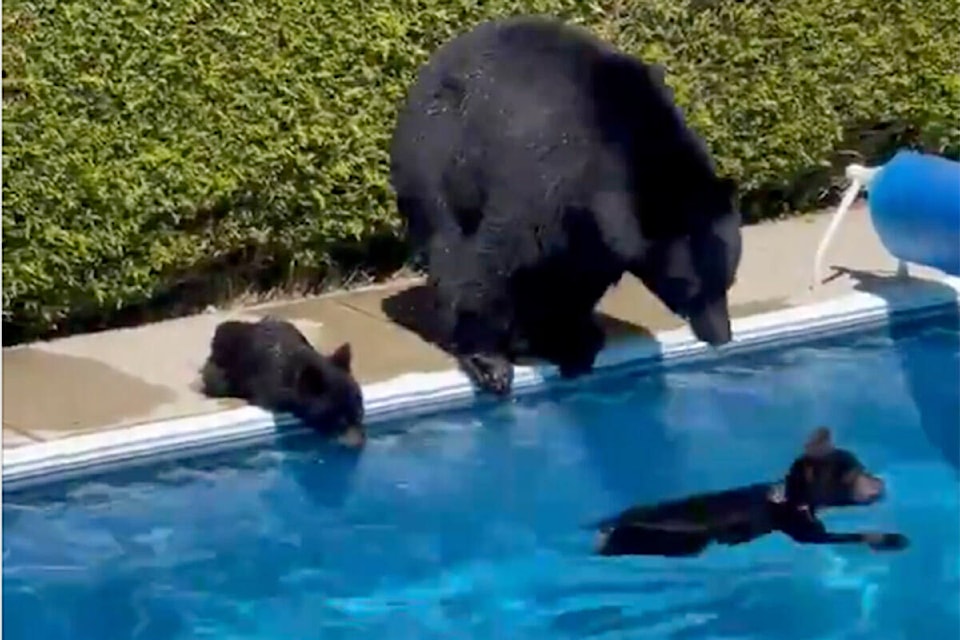Bear encounters during work or recreation can be the most rewarding part of the day or our worst nightmare, but if you spend much time in the outdoors encounters will likely happen.
A new documentary presents an approach interacting with grizzly bears that could make a major shift in how humans can coexist with these very intelligent creatures. The half hour Youtube video entitled “Taku River Tlingit First Nation (TRTFN) the Weir 2021” describes the changes made by the biologists and staff at a fish weir on the Taku river.
The river is a large glacial system beginning in northwest B.C. and draining into Taku Inlet around 40 kilometres (25 miles) east of Juneau, Alaska. Over the past couple of decades this river has supported runs of Chinook salmon averaging about 35,000 large fish.
The weir is a joint project between the U.S. and Canadian governments along with the Tlingit First Nation. Salmon are trapped so biologists can do counts and take measurements for ongoing population studies. Initial interactions between humans and bears was tense and unpleasant for both the bears and staff since bears were chased away because they were damaging the weir while catching fish.
A Tlingit elder suggest some changes since they had been coexisting with the bears for many years at this ancient fishing spot.
Biologist Phil Williams describes how he started using a more calm deliberate approach of talking to the bears and using gestures to discourage them from damaging the weir.
Williams was amazed at how intelligent the bears were by forgiving the negative treatment they had received in the past and how they understood that a firm NO meant that they should stop what they were doing (damaging the weir).
READ MORE: Cariboo residents urged to pick fruit to deter bears
Over time a more cooperative understanding between humans and bears developed with the bears understanding that they were welcome to fish in the area but they had to give way to the staff when they were working near the weir.
A log platform built next to the weir for measuring fish also became a favourite feeding spot for the bears which was defended by the dominant bears but vacated without complaint when the biologists returned for work.
The level of trust by a mother bear was demonstrated when she was crossing the river and her three small cubs were following by climbing along the weir since the river was too deep for them. One of the biologists was on the weir in the middle of the river counting fish with no escape route and was surprised as the cubs climbed over his feet with no apparent concern by mother bear.
Incidents like this along with other interviews with staff working who have had similar positive experiences is one of the main reason they keep working at their jobs. There has been some criticisms of the conclusions in this study that these bears are different than bears away from the river but Williams makes the point that he has had the same experience taking photos of bears in other areas. I encourage readers to see this documentary but am concerned that many bear encounters are often a surprise (for bears and humans), sometimes complicated by pets and predatory bears as well as mothers with cubs.
I think it is important to consider that the relationship between bears and humans at the weir has taken considerable time to develop and we should still practice the bear aware approach during our encounters with these marvelous animals.
Jim Hilton is a professional agrologist and forester who has lived and worked in the Cariboo Chilcotin for the past 40 years. Now retired, Hilton still volunteers his skills with local community forests organizations.
QUIZ: The bare facts about bears
Do you have something to add to this story, or something else we should report on? Email: cassidy.dankochik@quesnelobserver.com
@GimliJetsMan
cassidy.dankochik@quesnelobserver.com
Like us on Facebook and follow us on Twitter.
